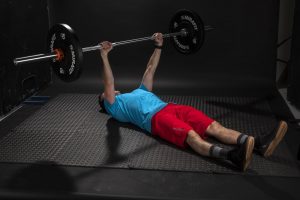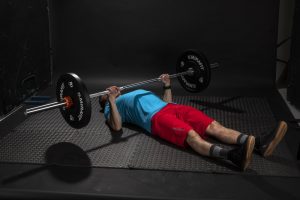A fundamental exercise
The press-up is an exercise that’s stood the test of time. It targets muscles you need to hold a confident riding position, and improves overall stability as part of a mountain bike fitness regime.
>>> Get fit for riding: four fundamental training principles
Doing press-ups regularly will increase your upper body strength quicker than riding alone, as the stress and subsequent adaption is much greater. If you want to take your bike handling in technical terrain to the next level, add press-ups to your training routine.


Level 1: Full press-up
Doing a full press-up where your chest touches the floor is a great achievement. And doing 10 reps is the benchmark. Don’t get soft when it gets hard though, a dipping lower back could be a sign of a weak core. Can’t do 10 full press-ups yet? Scale back and go to your knees, keeping the full range of movement to reap all of the benefits.


Level 2: Banded press-ups
If you’re confident with the press-up and can do multiple sets of 10 with strict form, then to progress you need to make the exercise more difficult, not just do more reps. Using a band for additional resistance will help overload the muscles and increase the benefits of the exercise, so you keep progressing.


Level 3: Floor Press
If you have a barbell and weights the floor press is a great way to overload the muscles involved in pressing. Yes, the range of motion is restricted but this actually makes it a better option that the traditional barbell bench press for riders with cranky shoulders. Once you can do 3 sets of 10 with good from, increase the total weight on the bar by 2.5kg. If the gym you train in doesn’t have fractional (small) weight plates, buy some and keep them in your kit bag.
The coach

Jonny Thompson is head coach for Fit4Racing, an online fitness programme for mtb riders. Once a forensic scientist, Jonny has devoted the last 10 years to coaching athletes from Paralympians to world number one enduro racers. His main focus with the Fit4Racing team is developing and delivering fitness programmes to pro and amateur riders.
Training the likes of Adam Brayton, Jonny also sends digital programmes to riders all over the world, many of whom ride professionally.



